The Timber Hitch is for hauling large logs (or anything that shape), often many times the diameter of the line used. It will not jam, will not slip and will always come apart easily once unloaded.
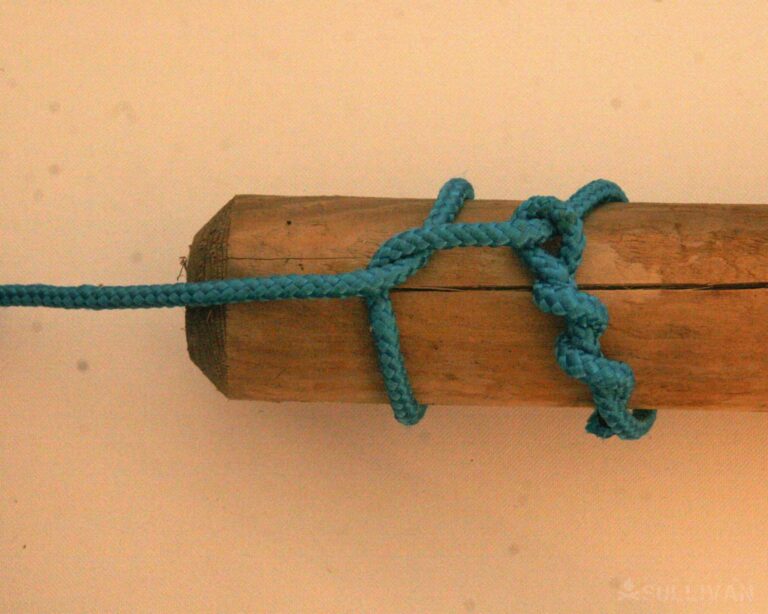
The Timber Hitch is effectively a much improved, much stronger version of the same concept as the half hitch.
Step 1. Make a turn. For these instructions the part of the line underneath the timber will be the working end:
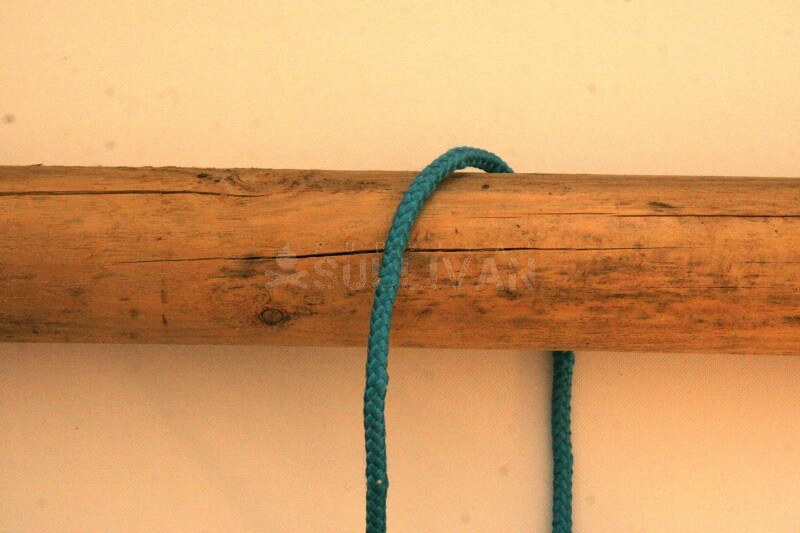
Step 2. Pass the working end under the standing part, and up over the timber:
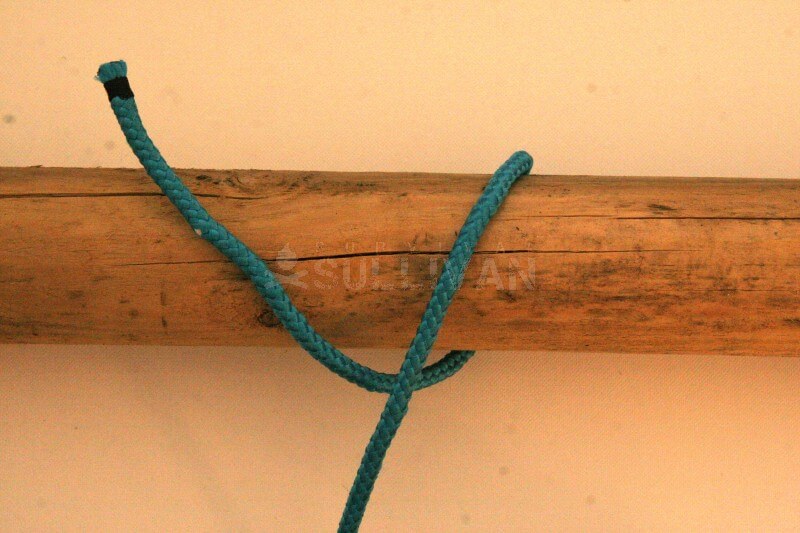
Step 3. Pass the working end back over the standing end:
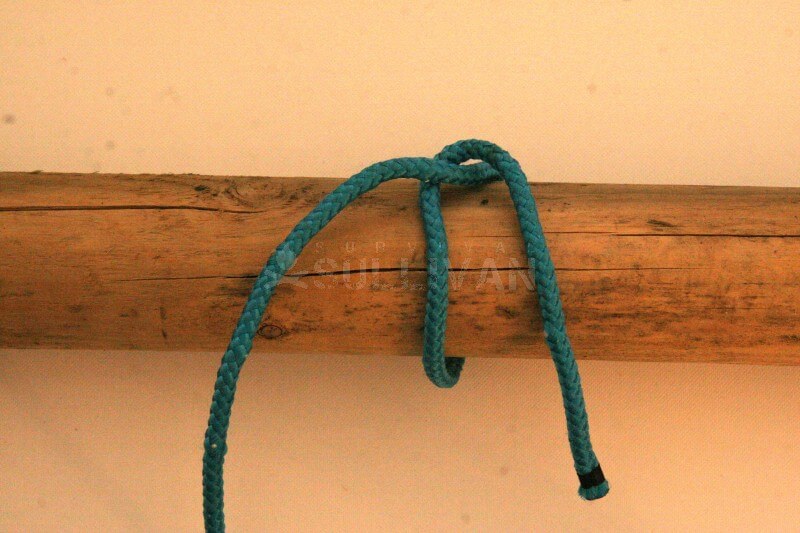
Step 4. Tuck the working end underneath the near part of the turn around the timber, forming a half hitch:
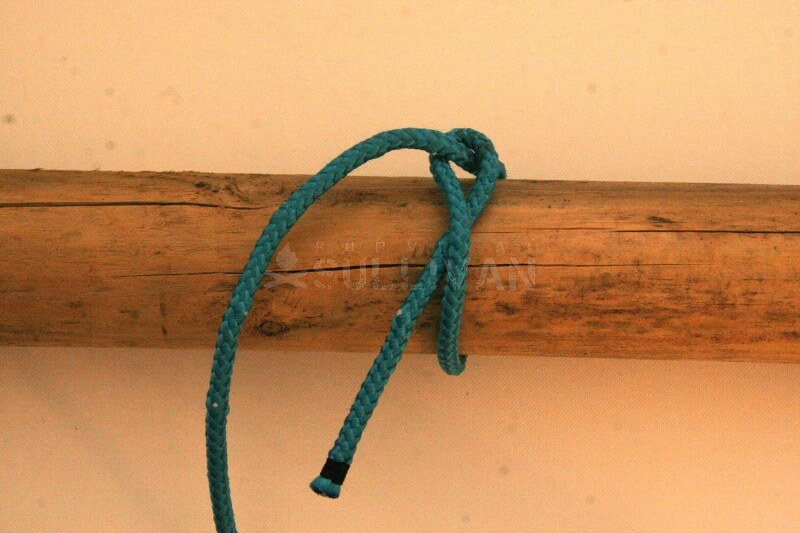
Step 5. Pass the working end back over the line it just went under:
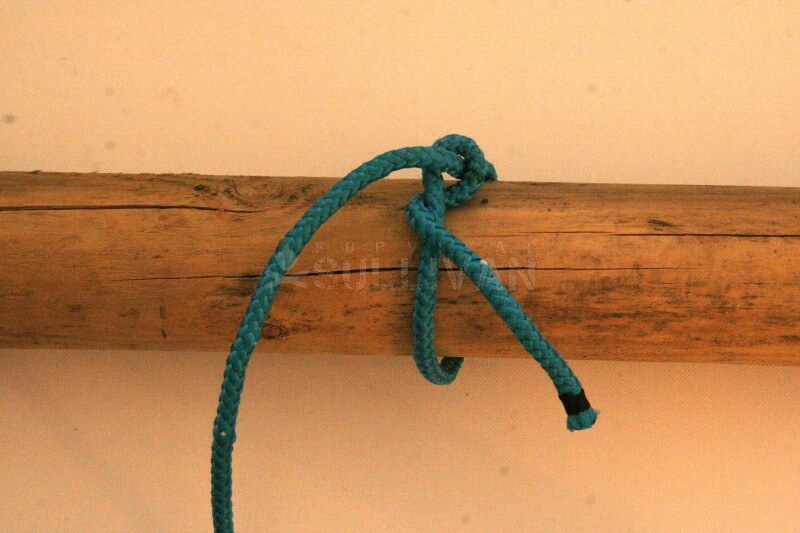
Step 6. Tuck the working end under the line again, forming another wrap around it:
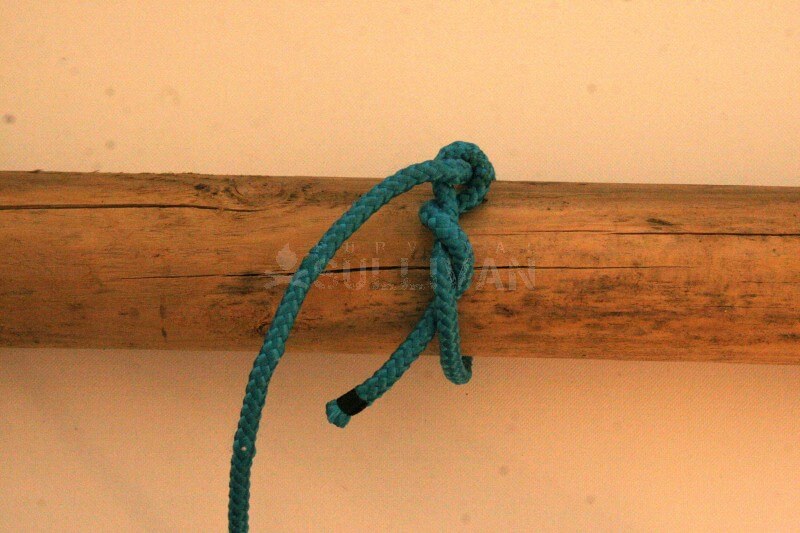
Step 7. Keep wrapping the end around this line, the more times the better for strength and security. Wrap enough times to keep the end out of the way:
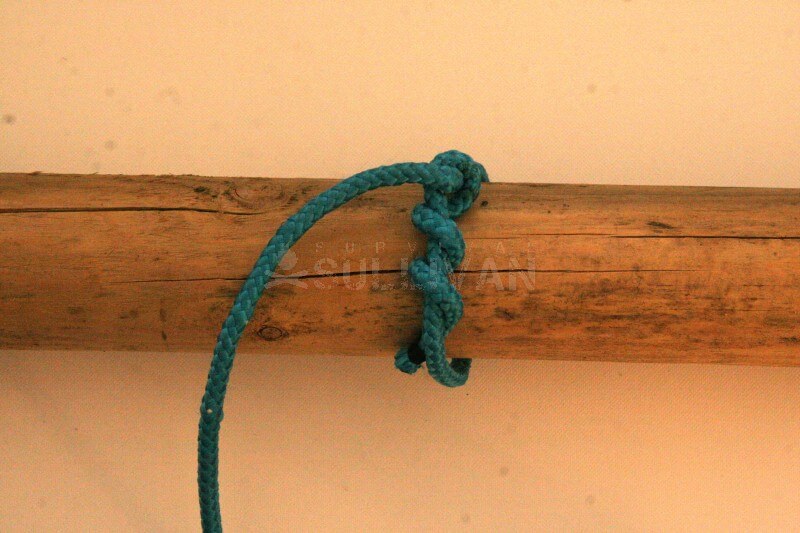
The Timber Hitch can be tied on the end as above, but when actually used for hauling logs is often tied in the middle of the log, and then a half hitch slipped over the end to act as a guide for pulling (one would be pulling the line from the end of the log where the half hitch is).
Step 8. Make a loop, with the working part underneath and closer to the log than the standing part:
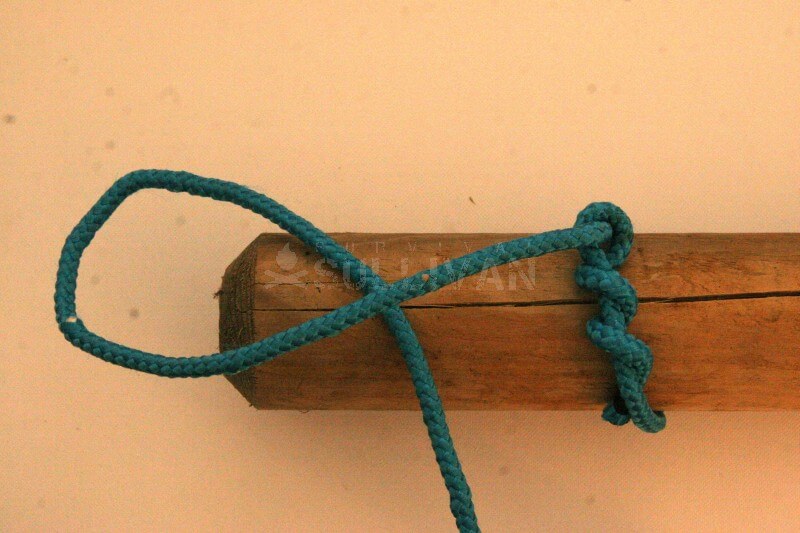
Step 9. Pass the loop over the end of the log:
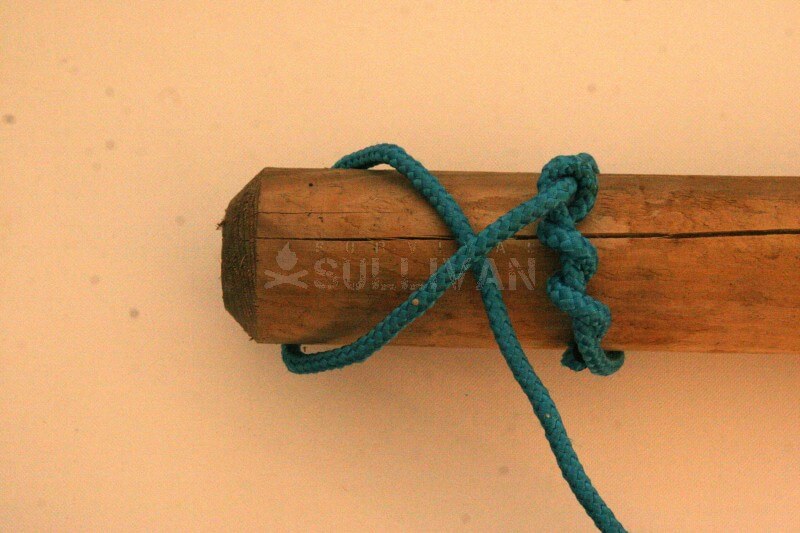
Step 10. Move the loop to where you want it. The loops should be evenly spaced between the Timber Hitch and the end of the log, so with only one loop it should be about halfway between the knot and the end:
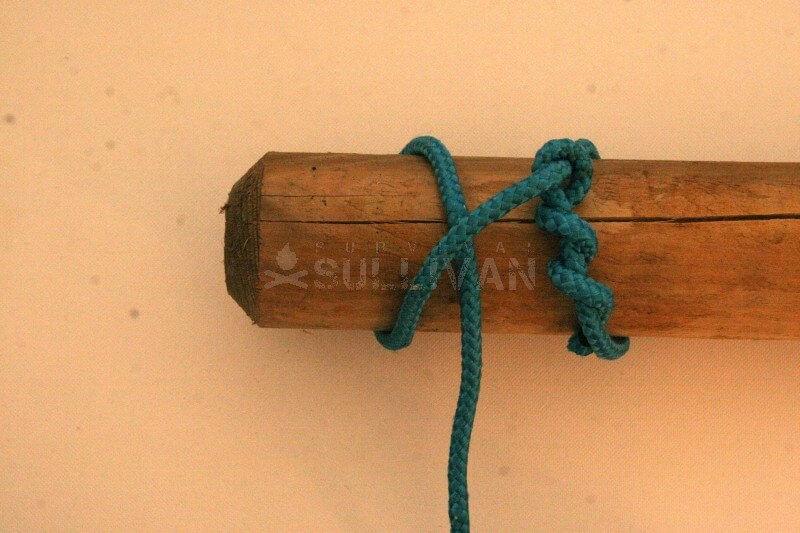
Step 11. Pull on the standing / hauling end of the line to tighten the loop and move the log:

Related Knots
- For a more secure lengthways pull a proper ‘slide and grip’ hitch is preferable, especially if safety is a concern. The Icicle Hitch, Death Gripper Hitch and variations on the Prusik Loop are all good examples.
- The Timber Hitch is a variation of the Half Hitch concept, and so is related to other variations like the Clove Hitch and Killick Hitch.
For more knots, read our survival knots guide.
Conclusion
The Timber Hitch is a simple knot, easily remembered and with many uses. However, it’s breadth should not be overestimated, and in some situations a slide and grip hitch or a loop is preferable.
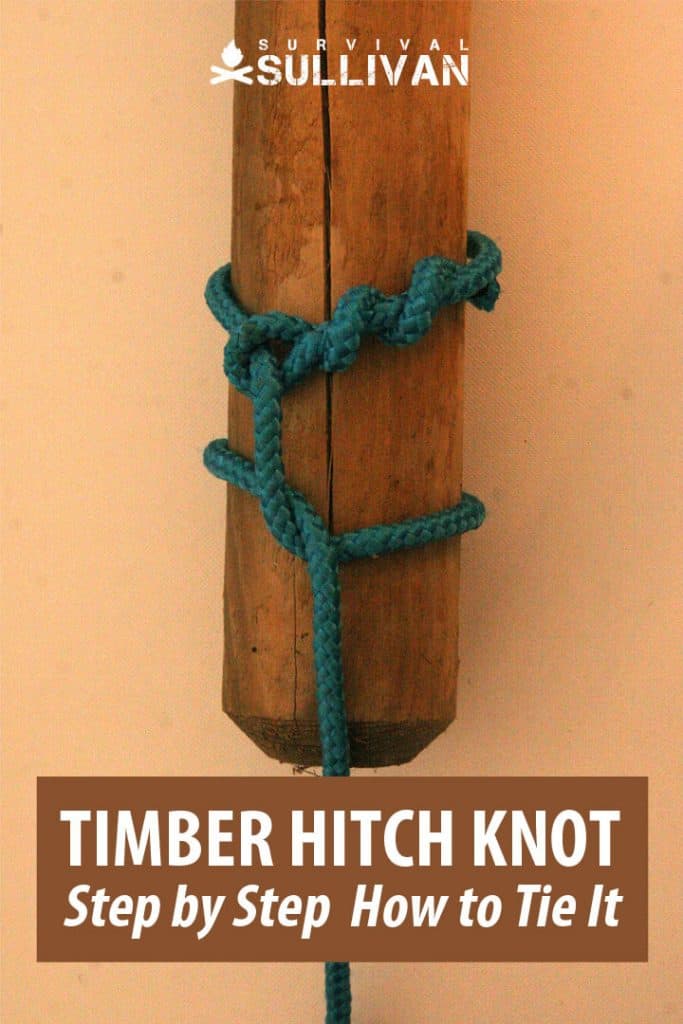
Nick O’Law has been exposed to survival from a very young age. In his teenage years, he learned A LOT about bushcrafting, such as making snares and traps, and even how to make DIY knives.
If you haven’t ye read and tried his knot-making articles on Survival Sullivan, you should definitely check them out.
